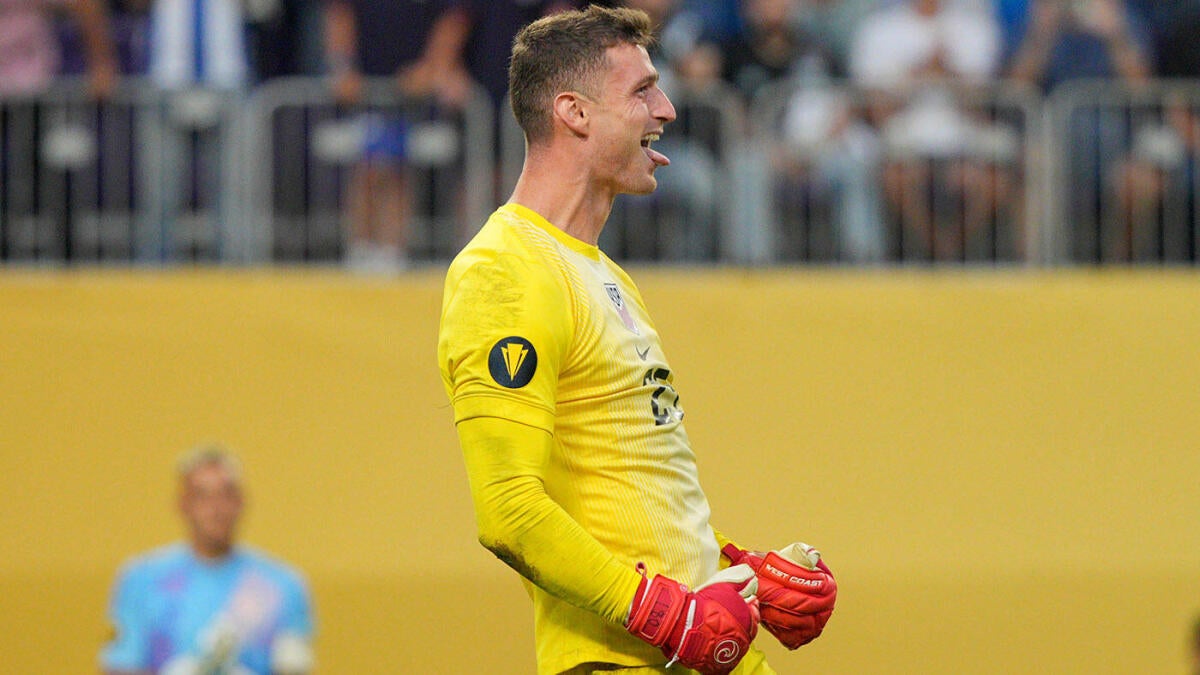The 2025 Concacaf Gold Cup quarterfinal between the United States Men’s National Team (USMNT) and Costa Rica was a spectacle of drama, resilience, and tactical intrigue. Played at Minneapolis’s U.S. Bank Stadium, the match showcased the best of knockout soccer—high stakes, intense pressure, and moments of individual brilliance that defined the outcome. The USMNT’s 2-2 draw in regulation, followed by a 4-3 penalty shootout victory, solidified this encounter as a pivotal moment in U.S. soccer history, reflecting the team’s growth and the broader narrative of the tournament.
A Game Defined by High Stakes and Dramatic Fluctuations
Entering the quarterfinal undefeated in the group stage, the USMNT faced a Costa Rica side known for its defensive resilience and the legendary presence of goalkeeper Keylor Navas. The match was a microcosm of the tension and skill that define knockout soccer, with both teams demonstrating mental fortitude under pressure. The 2-2 draw in regulation highlighted Costa Rica’s ability to withstand relentless U.S. pressure, despite the USMNT creating multiple scoring opportunities. The stalemate set the stage for a penalty shootout, where the fine margins of soccer were on full display.
The back-and-forth nature of the game underscored the importance of composure in high-pressure situations. The USMNT’s ability to recover from conceding goals and maintain their attacking momentum was a testament to their growing maturity. Meanwhile, Costa Rica’s defensive organization, anchored by Navas, frustrated the U.S. attack, forcing them to adapt tactically. The match was a masterclass in resilience, with both teams refusing to yield until the final whistle.
Tactical Battles: Navigating an Experienced Foe
Costa Rica’s defensive setup was built around Navas, whose goalkeeping heroics kept his team in the game. Nicknamed “La Pantera,” Navas made several spectacular saves, reinforcing the idea that a world-class goalkeeper can be the difference in tournament soccer. His presence forced the USMNT to rethink their attacking strategies, emphasizing creativity and patience rather than brute force.
The USMNT, meanwhile, showcased their attacking dynamism but struggled to break down Costa Rica’s organized defense. Their ability to gradually build pressure, rather than resorting to an all-out offensive onslaught, demonstrated tactical maturity. Substitutions, midfield control, and pressing strategies were crucial, as the USMNT had to balance energy conservation for potential extra time while seizing moments to apply pressure. The resilience shown in recovering from setbacks was a recurring theme, highlighting the mental strength of the squad.
The Penalty Shootout: A Test of Nerves and Technique
The penalty shootout emerged as the defining moment of the match. Matt Freese, the USMNT goalkeeper, became an instant hero by making crucial saves under immense pressure. His performances during the shootout demonstrated the psychological edge a goalkeeper can wield, not only in shot-stopping but in unsettling opponents. Freese’s heroics were a turning point, as the USMNT won 4-3 on penalties, showcasing their ability to perform under pressure.
The shootout was a test of nerves and technique, ultimately rewarding the USMNT’s resilience. This victory propelled the team into the semifinals, reinforcing belief and momentum within the squad and among supporters. The ability to win in such a high-pressure situation was a significant milestone for the USMNT, signaling their growing competitiveness on the international stage.
Implications for US Soccer and the Gold Cup Narrative
The dramatic quarterfinal win carries broader implications for U.S. soccer. Firstly, it confirms the team’s growing maturity in high-pressure situations, which have historically been stumbling blocks. The ability to advance via penalties against a strong Central American rival sends a message about increasing depth, mental resilience, and international competitiveness.
Secondly, the victory elevates the USMNT’s stature going into the semifinals and prospective final, positioning them as contenders with a narrative of overcoming adversity. Such moments galvanize team spirit, fan engagement, and media attention, all contributing to the growth of soccer’s profile in the United States.
Finally, the match served as a reminder of the importance of individual moments within a collective framework. Key figures like Keylor Navas for Costa Rica and Matt Freese for the USMNT can heavily influence outcomes, serving as catalysts for future tactical and roster considerations.
Conclusion: A Match Etched in Gold Cup History
The USMNT’s 2-2 draw and subsequent penalty shootout victory over Costa Rica in the 2025 Gold Cup quarterfinal encapsulated the essence of knockout tournament soccer—intense competition, razor-thin margins, and moments of individual brilliance. Keylor Navas’s goalkeeping heroics made the game a captivating spectacle, while Matt Freese’s clutch saves in the shootout underscored a new chapter in USMNT’s competitive identity.
Beyond the result itself, this game represented a milestone in the team’s development and competitive spirit, reinforcing confidence heading into the latter stages of the Gold Cup. It spotlighted how tactical resilience, mental toughness, and seizing decisive moments converge to define football success at the highest levels.
As the USMNT advances, the lessons and memories from this quarterfinal will serve as a foundation for their pursuit of continental glory, inspiring players and fans alike with a tale of perseverance and triumph under pressure. This match will undoubtedly be remembered as a defining moment in U.S. soccer history, setting the stage for future success on the international stage.












